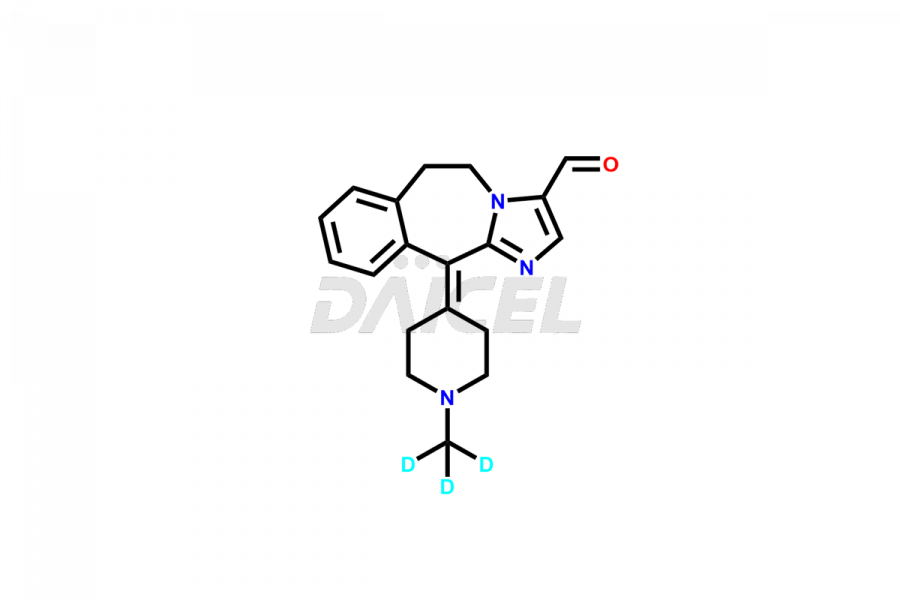Alcaftadine
References
- Janssens, Frans Eduard; Diels, Gaston Stanislas Marcella; Leenaerts, Joseph Elisabeth, Imidazo¬2,1-b ¬3 benzazepine derivatives, compositions and method of use, Janssen Pharmaceutica N.V., Belgium, EP518435A1, December 16, 1992
- Mishra, P. R.; Satone, D.; Meshram, D. B., Development and validation of HPLC method for the determination of alcaftadine in bulk drug and its ophthalmic solution, Journal of Chromatography and Separation Techniques, Volume: 7, Issue: 1, Pages: 312/1-312/4, 2016
Frequently Asked Questions
Do Alcaftadine impurities impact the drug's stability and shelf life?
Impurities in Alcaftadine can impact the drug's stability and shelf life, potentially reducing its effectiveness over time. Therefore, controlling impurity levels is critical to ensure the drug's quality and shelf life.
How do manufacturers determine acceptable levels of Alcaftadine impurities?
Manufacturers determine the acceptable levels of impurities in Alcaftadine based on regulatory guidelines and scientific data. They must demonstrate that thery do not exceed safe limits and the drug remains safe and effective.
Do Alcaftadine impurities change over time or in different storage conditions?
Impurities in Alcaftadine can change over time or in different storage conditions. For example, they may degrade or form new impurities under exposure to light, heat, moisture, or other factors. Therefore, manufacturers must test and monitor the drug under different storage conditions and use appropriate packaging and labeling to prevent degradation.
What are the temperature conditions required to store Alcaftadine impurities?
Alcaftadine impurities are stored at a controlled room temperature between 2-8 °C or as indicated on the Certificate of Analysis (CoA).
Note: Products protected by valid patents by a manufacturer are not offered for sale in countries having patent protection. The sale of such products constitutes a patent infringement, and its liability is at the buyer's risk.

